Holidays to Tavira Portugal: 7 things to do
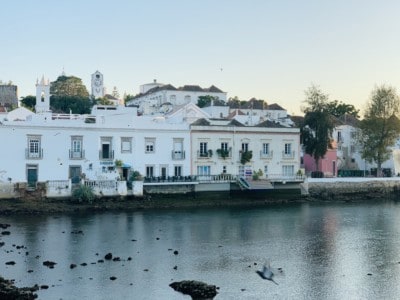
By Emma Marshall
This post contains affiliate links
Holidays to Tavira Portugal are wonderful. It is located in the eastern part of the Algarve, a popular area for holidaymakers to visit.
The Algarve is Portugal’s most southerly region, and forms a fringe along the Atlantic Ocean. The area is therefore blessed with beaches galore, picturesque white washed villages and a pleasant climate. This is probably the reason that millions of people a year come from overseas to visit the Algarve.
Places to visit in the Algarve
There are an abundance of towns to consider when deciding which Algarve destination to visit.
Popular places include the likes of Lagos, Faro, Albufeira, Sagres and Monchique. Your choice of destination will very much depend on what you want to do and personal preferences. All bar one of these are on the coast and so there is no shortage of places for a beach break.
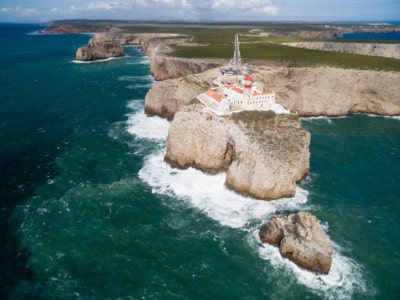
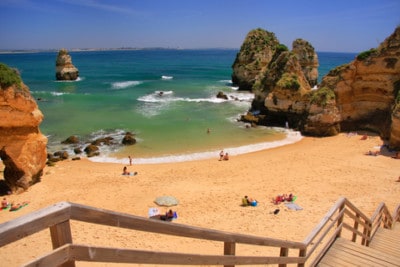
The exception in the list above is Monchique which is situated inland. Nearby are the Serra da Monchique mountains. So if you’re looking for more of hiking holiday or an opportunity to see beautiful forested landscapes, this might be your choice.
The Algarve is also well known for its golf courses with around 40 scattered across the region.
Every single one is worth a visit and has different things to offer. However, if you’re looking for somewhere a bit quieter, and that’s often overlooked, then you really should consider a holiday to Tavira Portugal.
Holidays to Tavira, Portugal
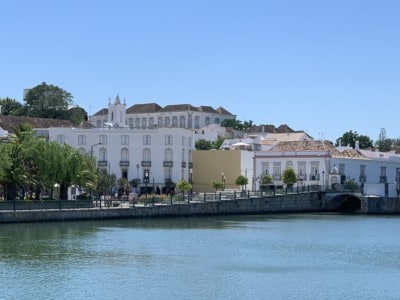
Where is Tavira?
Tavira is situated in the eastern part of the Algarve. It is around 38 kilometres from Faro and 25 kilometres from the Spanish border (Huelva is 86 kilometres away and Seville 174 kilometres).
It’s easterly location means it’s a bit away from the more touristy parts of the region, which are more to the west of Faro.
Things to do on your holiday to Tavira, Portugal
Depending on what you fancy doing, you could spend a varying amount of time in Tavira. It could be part of a longer road trip through the Algarve or Southern Spain, your main resort-based holiday, or a short break.
We visited on a short, three-night break and found it was an ideal destination if you’re travelling on a time budget. There’s enough to do to keep you occupied for a few days, but not so much that you find yourself rushing, here, there and everywhere. It’s perfect for taking things a bit slower and relaxing in the sunshine.
Read on for a flavour of the things you could do on a break to Tavira town.
1. Wander around Tavira town
Tavira is fairly compact so it’s easy to wander around. Divided into two by the Gilao river, there are old cobbled streets on both sides to explore. These have attractive coloured buildings, and a smattering of small shops where you can buy the usual tourist wares.
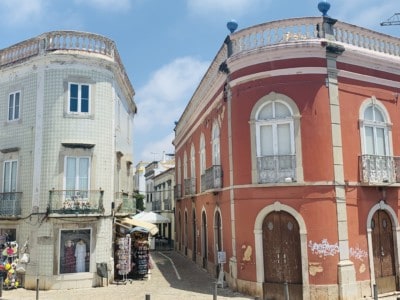
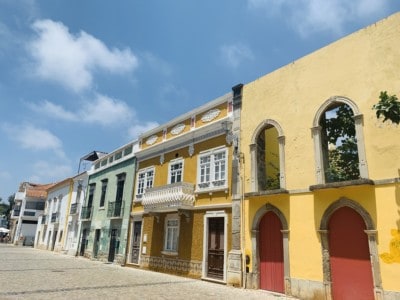
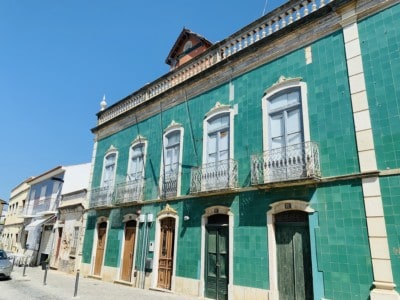
The two sides of the town are linked by several bridges. The most picturesque of these is the Ponte Romana de Tavira (Roman Bridge). This is not in fact Roman, but more likely named for its location on a Roman road passing through the town.
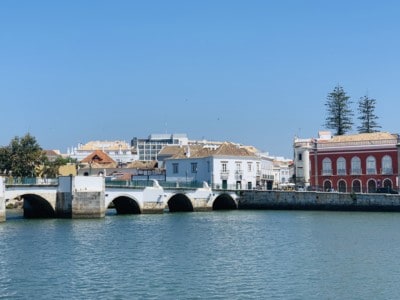
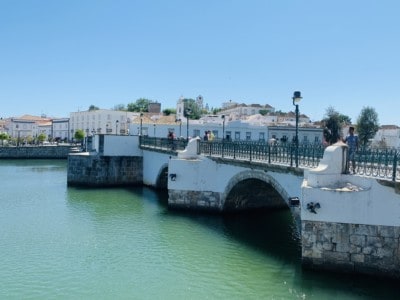
This is a pedestrian bridge and a perfect spot to amble up and down to find the best view for your photos of the river. At sunset, with the low tide on the river revealing the rocky river bed, and fantastic light from the setting sun, you can get some really atmospheric pictures.
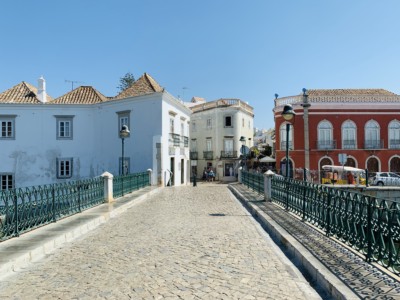
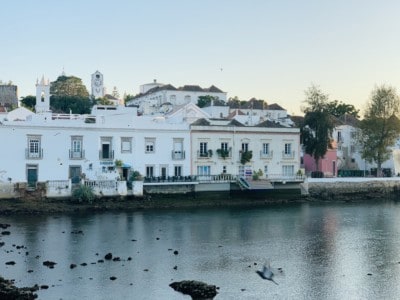
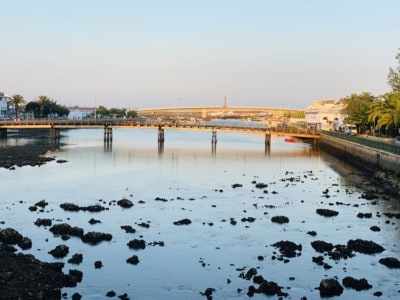
On both sides of the river, there are squares framed with al fresco cafes and restaurants.
Judging by festival that took place one night when we were there, I’d say the main square is the Praca da Republica. This is an open space with a war memorial in the centre and cafes (and an amazing gelataria) on one side.
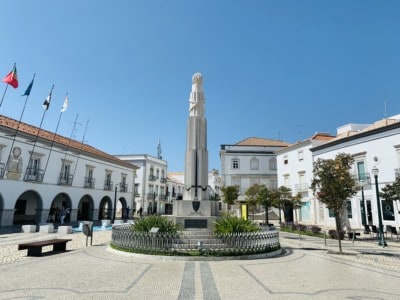
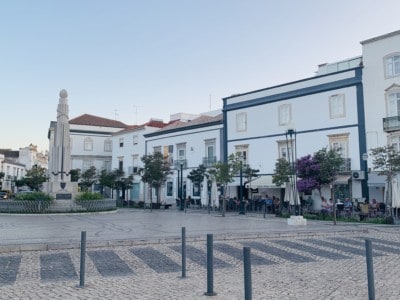
I personally preferred the Praca Dr Antonio Padhina square on the other side of the river. It is smaller and more intimate and you can sit outside in the evening sunshine listening to the buskers in the central gardens.
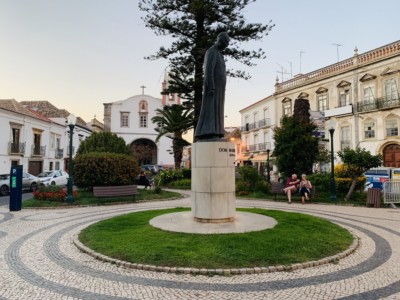
There’s also a small pretty church here on the corner with whitewashed walls and pastel pink trim on the belfry. We only came here twice, but I could easily have spent a week coming back each night to admire the surroundings.
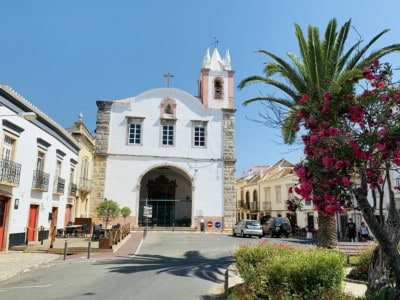
There’s a pleasant walk to be had along the river on both sides. On the Praca da Republica side check out the Jardim do Coreto gardens. Here you can stop off and admire the turtles swimming in the small moat around the bandstand.
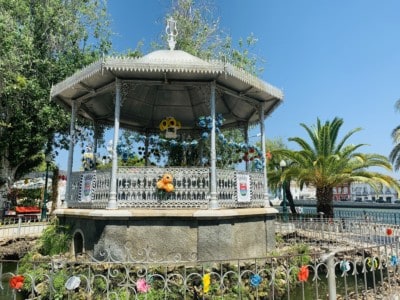
You can then walk to to the Mercado Da Rebeira. This is a 19th century waterfront market that was overhauled in 2000 and now has a few small shops inside and a couple of restaurants outside.
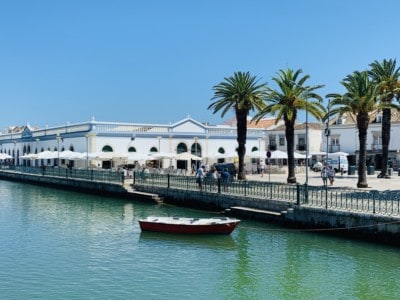
This is a lively area for an evening stroll or for dinner. As well as the eateries at the market, there are a few restaurants lining the Rua Dr Jose Pires Padhina to the side of the gardens leading up to this. You’ll also find a few artisan stalls selling various trinkets and sweets and cakes here.
The details: It is possible to see most things by taking a gentle stroll around the town. However, if you would prefer, you can take a tuk tuk tour.
You can pick these up by the Roman Bridge (on the Praca Dr Antonio Padhina square side along Rua Jaques Pessoa). You can also pre-book these with a tour company.
Tavira also has a tourist train which will take you past the sights. Pick this up in the same place as the tuk tuks.
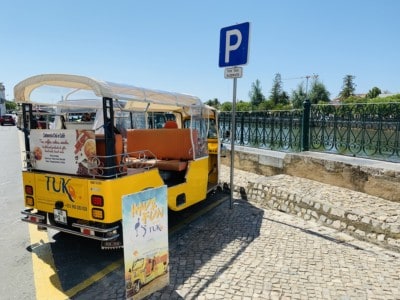
2. Look over the town from the Castelo (castle)
A short walk uphill from the Praca da Republica you’ll discover Tavira castle. Originally built by the Moors, it was developed from the 10th and 11th centuries.
The structure is surprisingly small (although it had apparently covered 5 hectares during the late middle ages). It is largely ruins now, but it’s definitely worth a quick stop to climb up to the walls and take in the town from the viewpoints here.
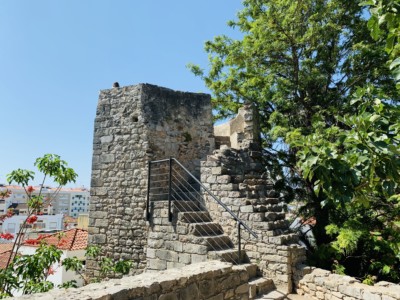
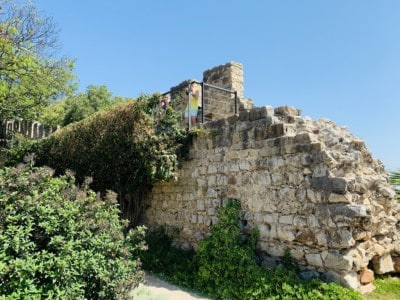
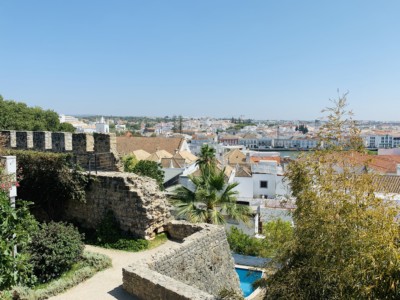
At the foot, there is a small garden. This was particularly relaxing on the day we were there with calming music piping out. Walk to the end and under the flower strewn archway and you’ll find the Igeja de Santa Maria do Castelo church. There is also a small café here, should you be in need of some refreshment.
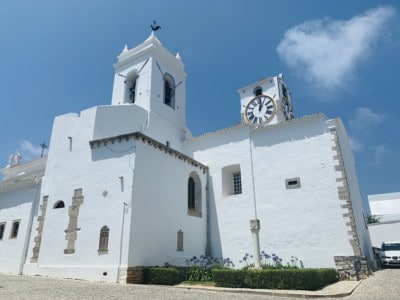
You can then walk from here the short way to Tavira’s Camera Obscura – another sight that you should definitely stop off and see…
The details: You’ll find the castle up a short steep passage off of Rua da Liberdade. It’s free to enter the ruins.
3. Get a bird’s eye view of Tavira with the Camera Obscura
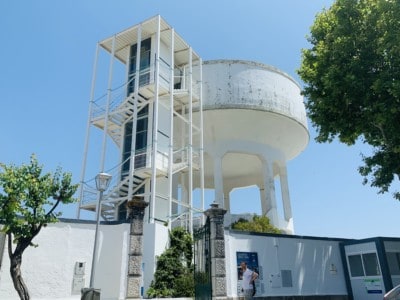
In its own words, Tavira’s Camera Obscura is described as “an experience beyond imagination!”
Based in the old water tower, it uses a mirror and two lenses to allow you look down on the town in real time. And through use of a pulley, the guide is able to shift the angle of the cameras to take you on a 360-degree tour through all of Tavira’s different districts.
You can watch people walking along the Roman Bridge, sitting in the sun drinking their Aperol Spritzes and and sitting down for meals. We even got close enough to see two guys lighting their barbecue on a roof top terrace (and were told that the camera has also at times picked up some behaviour that the participants would rather have remained private!).
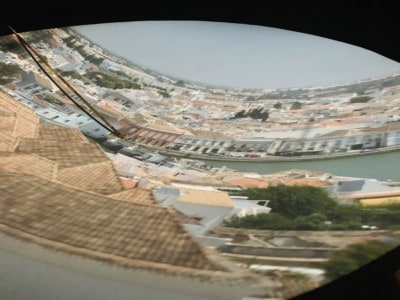
It’s a fascinating experience and gives you a bird’s-eye view of the town as well as the opportunity to hear a bit more about Tavira’s history. For example, we were told about the collapse of the Roman Bridge during the 1989 flood.
You can also learn more about these types of cameras. And when you consider that this is apparently one of only a handful in the world, its definitely something not to miss.
The details: It costs 5 euros for a 15-20 minute visit to the Camera Obscura. You need to be accompanied by a guide who works the camera and so there are set times to view. This means that there may be a short wait when you arrive.
4. Sunbathe on the Ilha de Tavira
If you’re someone who loves an afternoon on the beach, then this is also possible on a short break to Tavira. Whilst the town is not directly on the coast, it’s only just a short boat or car ride away. Don’t forget to pack swimsuits and sunscreen!
There are several beaches to choose from (including those at Barill and Cabanas), but we chose to go the Ilha de Tavira.
We caught the boat from the ferry port which is just a short walk beyond the Mercardo Da Rebecca. It takes a route down the river Galio and out of town and into the start of the channels of the Ria Formosa (see below).
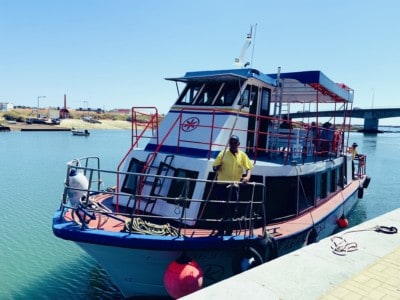
Around 20 minutes later you’re dropped off at a small quay, from where you follow the path around until you reach the beach.
You’ll come across bars and restaurants first (and a small supermarket if you’ve forgotten anything). Beyond this you’ll find the boardwalk which will take you onto the beach. This is a massive stretch of sand with sunbeds neatly arranged along it.
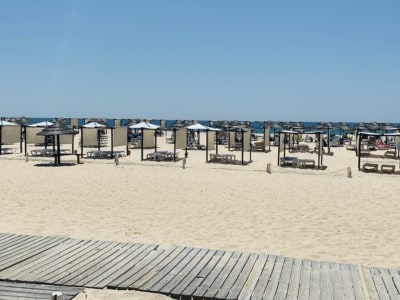
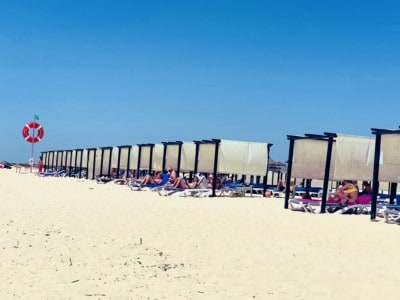
The beach is impressively clean and pristine and a lovely place to lie back, close your eyes and listen to the sea. The sea itself, however…well it was a tad cold on the day we visited (the end of June), so be prepared!
Our hotel concierge had warned us of this. Located on the Atlantic Ocean, it apparently does get windy and a little cold at times. But that aside, it was a nice place to spend a few hours. And having to reach it by boat really meant that it felt like you were getting away from it all.
The details: Catch the boat from Rua Dr Jose Pires Padhina, beyond the Mercardo Da Rebeira. Boats run to and from Tavira Island every half an hour in the morning and then every hour in the afternoon. An adult return ticket is 2 euros.
We pre-booked sunbeds through a deal on offer in our hotel. This was 15 euros for two sunbeds and a welcome drink. It would therefore be worth enquiring if your accommodation offers the same.
5. See the wildlife of the Ria Formosa
The Ria Formosa is a natural wetlands park stretching some 60km along the coast, but protected from the sea in the Tavira area by the Ilha de Tavira.
It’s an extensive network of wetlands, salt marshes and canals where you can take boat trips and look at the wildlife that flocks here (all information on the area mentions the birds that stop off during their migrations). It’s perfect for anyone who has an interest in nature or conservation.
We didn’t have time to take a trip out here, but we did sail through a small part on our way to the Ilha de Tavira. Unfortunately, we didn’t see any migratory birds!
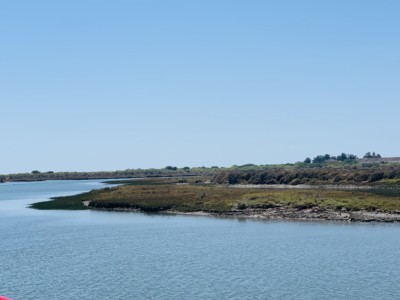
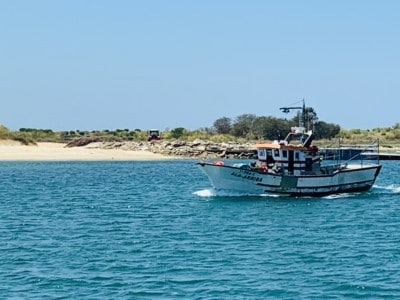
Part of the Ria Formosa on the trip out to the Ilha de Tavira
The details: There are a variety of tour operators that offer trips out around the Ria Formosa. This includes GetYourGuide: click here to book your trip.
6. Day trip elsewhere
As with the Ria Formosa, there are a number trips and activities that you could book that will take you outside of Tavira. These include fishing tours, olive oil tours and trips to see some of the more rural areas of the eastern Algarve. You can also day trip further afield to places such as Seville.
Popping into Faro, the “capital” of the Algarve, would also be an easy day-out. You could book a trip that includes Faro, or alternatively hop on the train and visit independently (see below for more information). There’s quite a bit to see in Faro, including its historic old town, cathedrals, churches and monuments, and its marina.
7. Eat out in one of the local restaurants
We weren’t in Tavira long enough to try out an extensive range of restaurants, but every meal we had was wonderful. For obvious reasons, fish is a big deal here. There is a generous choice of grilled and fried fish and seafood on offer in the restaurants, often served simply with boiled potatoes and vegetables.
We also had a delicious fish stew one evening. This was a mix of fish and seafood in a tasty tomato broth and served in the pot at the table. It was a great second course after our starters of homemade tuna pate and goats cheese drenched in honey.
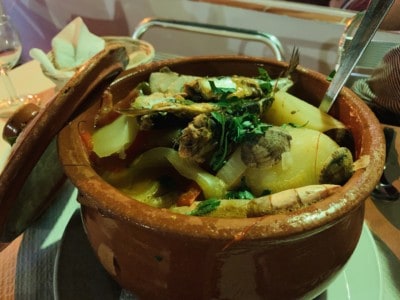
There are several places to choose around the Praca Dr Antonio Padhina square. Also try out the places along Rua Dr Jose Pires Padhina near to the gardens and covered market, most of which have outdoor seating.
There are also plenty of places for a quick and inexpensive snack for lunch or for an afternoon break. Among other things, you can have tostadas for just a couple of euros and (of course!) the traditional Portuguese pasteis de natas.
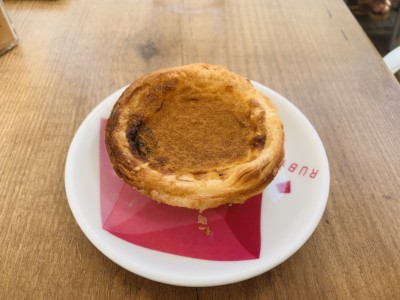
Tavira also offers a variety of other eateries where you can savour other types of continental food. There are also a large number Indian restaurants, presumably reflecting the earlier Portuguese rule in parts of India.
In terms of bars, my top recommendation would be the Maria Nova Lounge Hotel. This is a short walk up the hill to Rua Antonio Pinheiro. The hotel has a lovely roof top bar. Here you can sit with a drink and take in the views across the river. It is particularly nice at sunset.
Getting to your holiday to Tavira, Portugal
If you’re flying into Portugal to specifically visit the Algarve, you’ll most likely have flown into Faro airport. Once there, there are two main ways to get to Tavira: by bus from the airport, or by train from Faro train station.
There are two bus companies that go to Tavira from the airport. You pick both of these up just outside of the main arrivals terminal. The rede expressos bus runs three times a day from the airport at 9:00, 12:00 and 17:00 and takes 30 minutes. It returns 10.15, 11.15 and 21:00.
The Eva bus also runs to the town three times a day (at 08:20, 14:10 and 17:10) and takes between 30 and 45 minutes. It returns at 08:50, 09:35, 11:55, and 17:45.
Train: There is no train link from the airport to Faro city centre, so you’ll need to either catch a bus or a taxi to the station. The bus to town can also be caught outside of the terminal. This runs twice an hour at intervals ranging between 20 and 40 minutes apart. It takes 20 minutes. There is a stop a few feet away from the train station.
There are regular trains for Tavira throughout the day, but there can be long intervals between them, so check timetables before you leave.
You can also book direct transfers from Faro airport.
All times correct as of the end of June 2019.
If you’re interested in other places in Portugal, my website has other posts that might be of use:


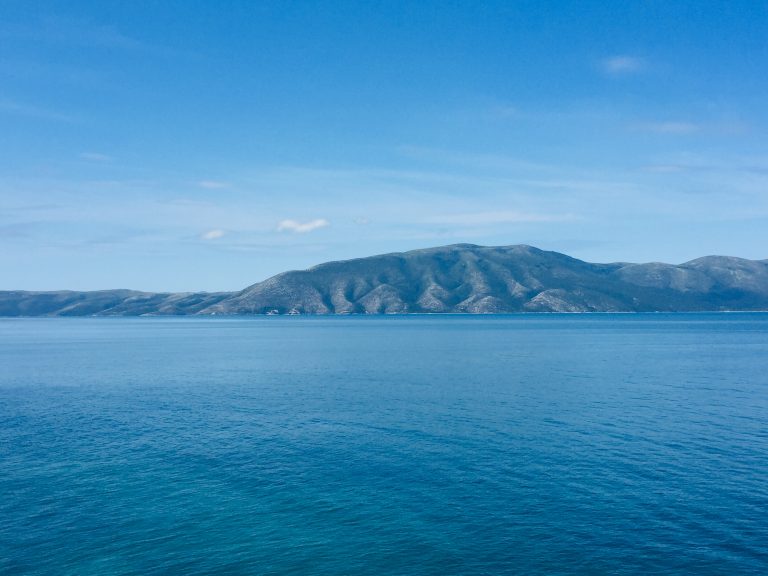
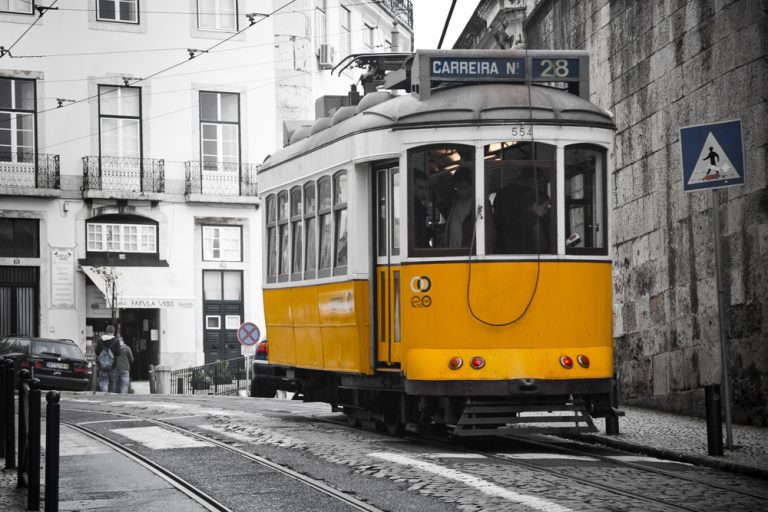
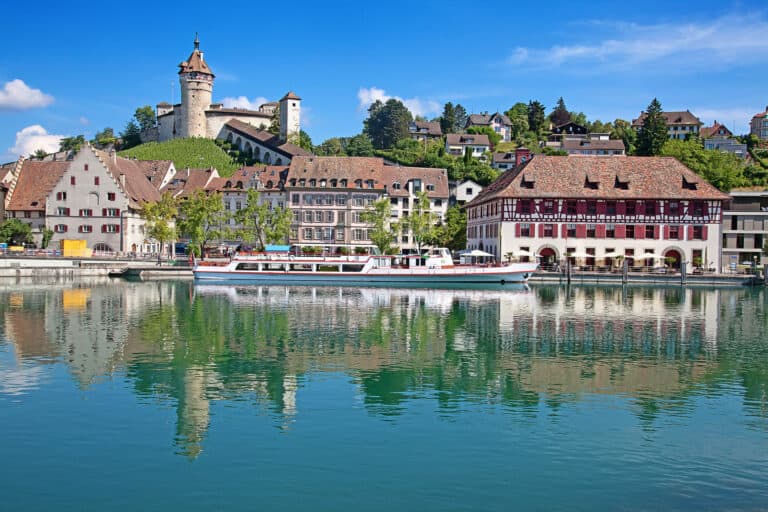
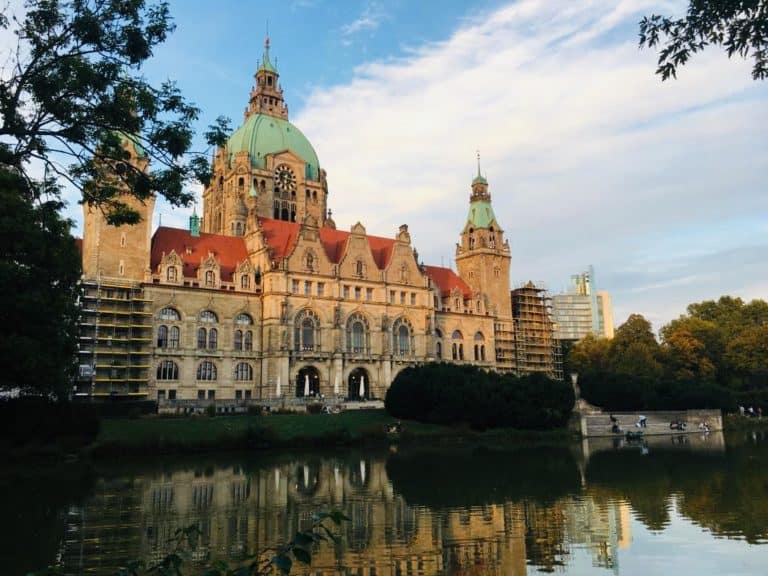
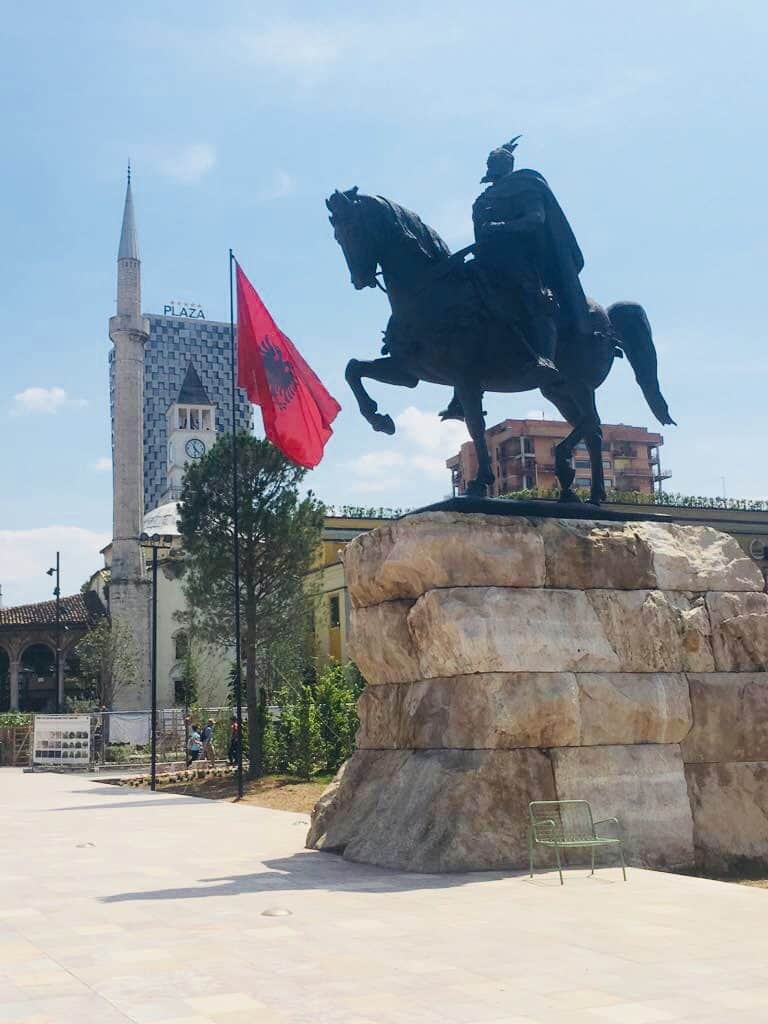
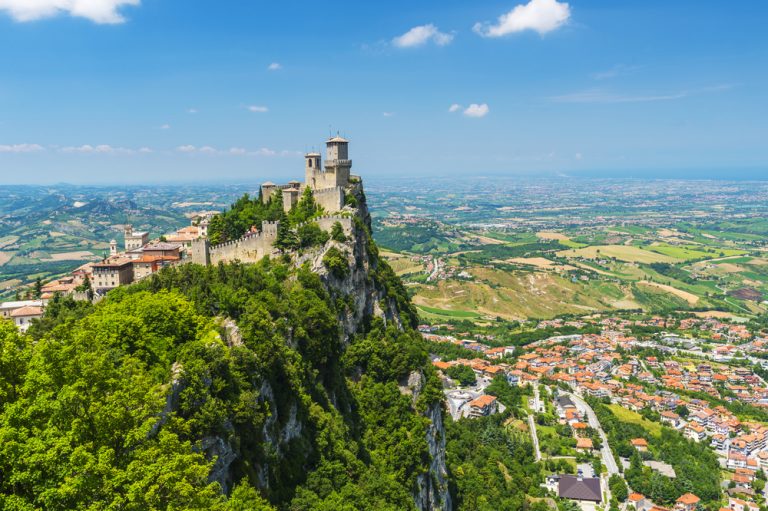
Fab post! That camera obscura sounds fascinating
Thanks Karen x
Very relaxing place to watch the world go by at the Riverside bars A fantastic beach with seafood restaurants and even a nudist beach for the more adventurous Beautiful buildings to explore Highly reccomend a visit to Tavira
I’m glad you loved Tavira Lesley. I did too!